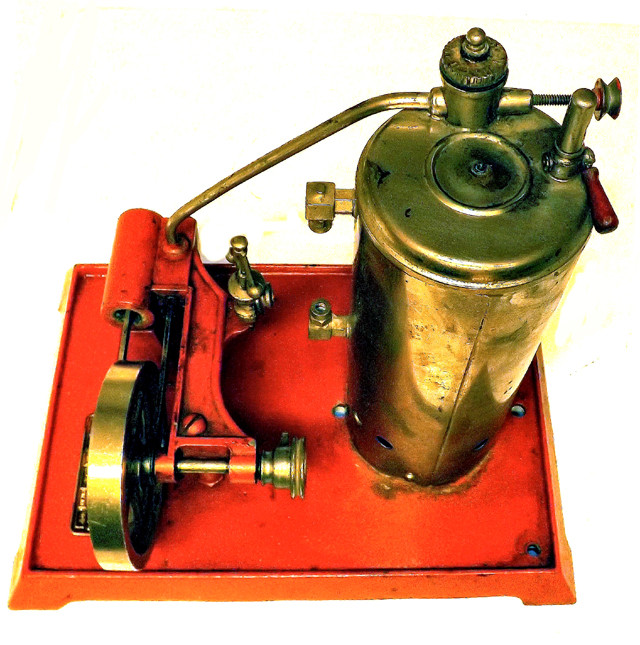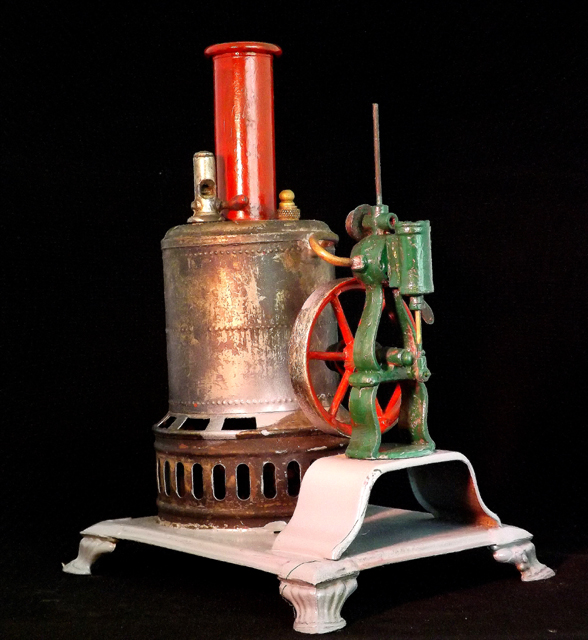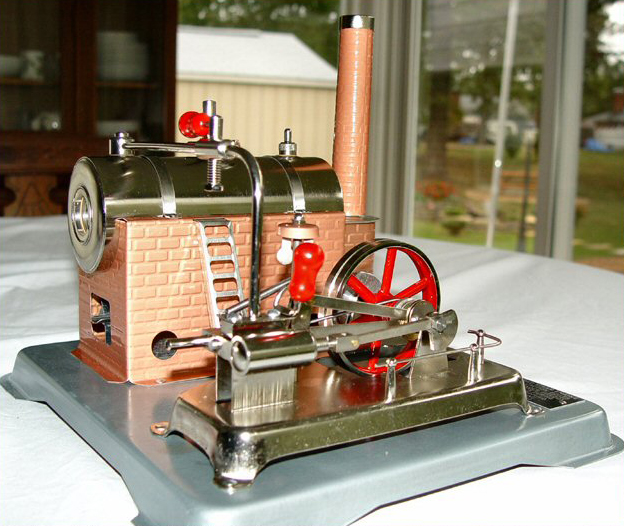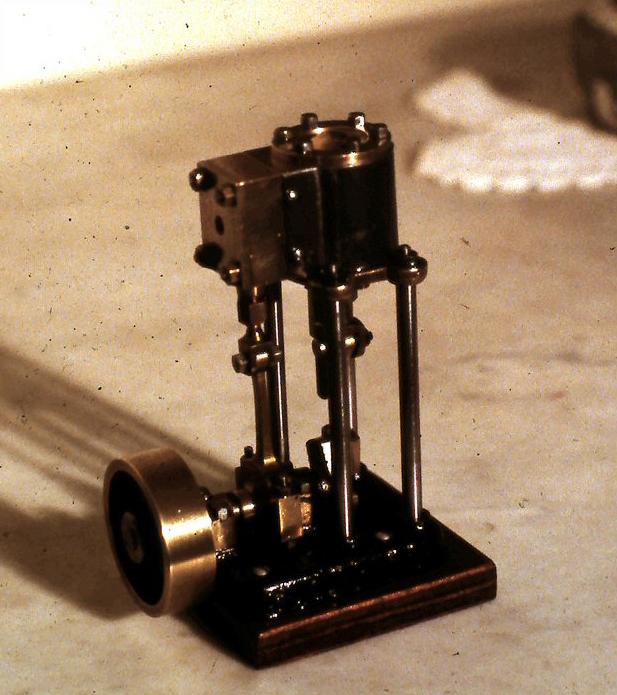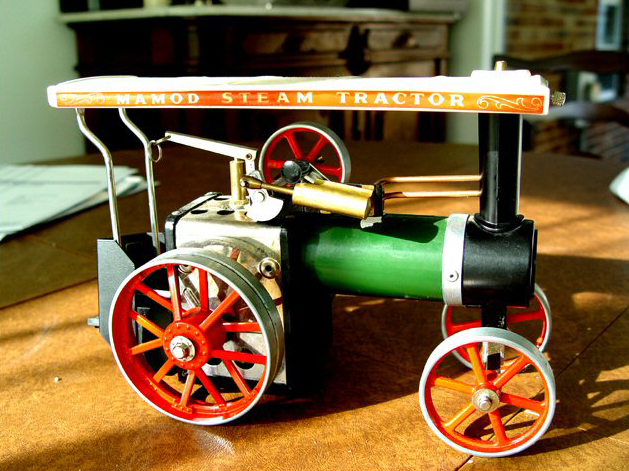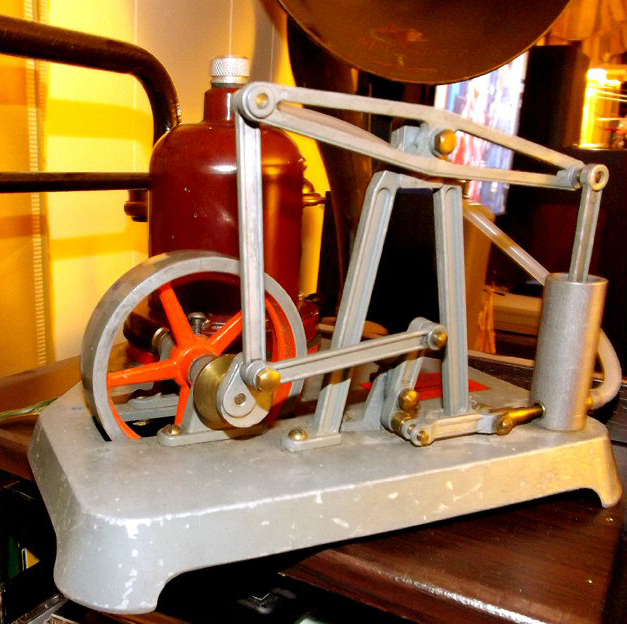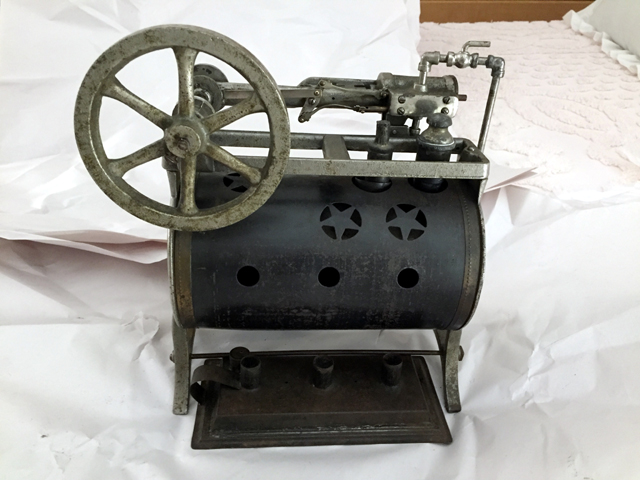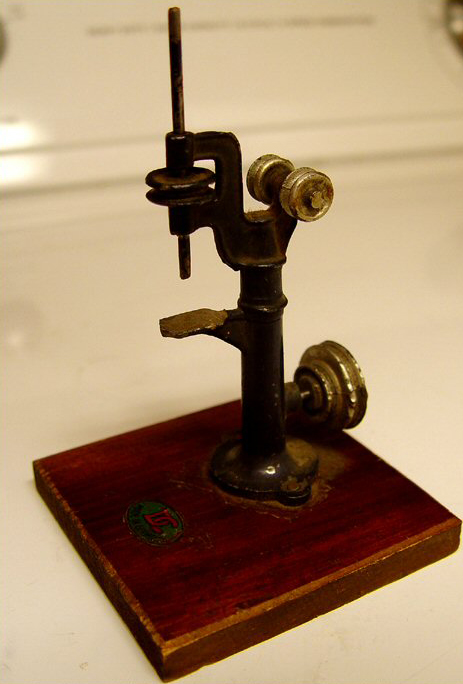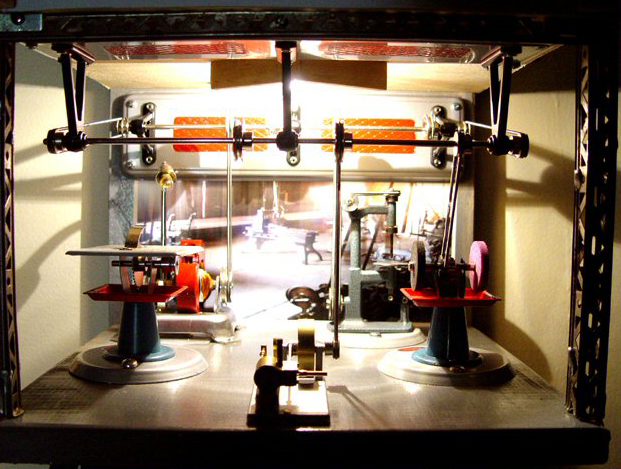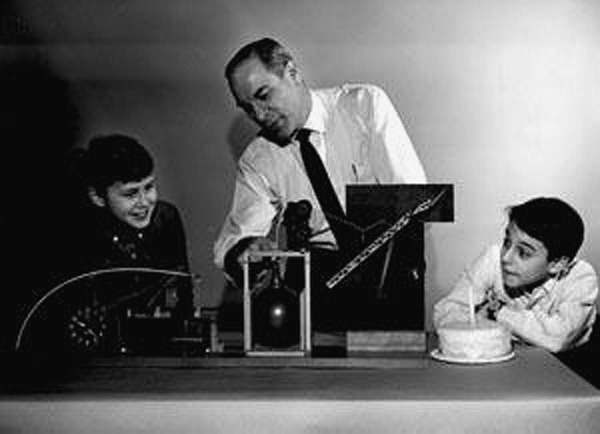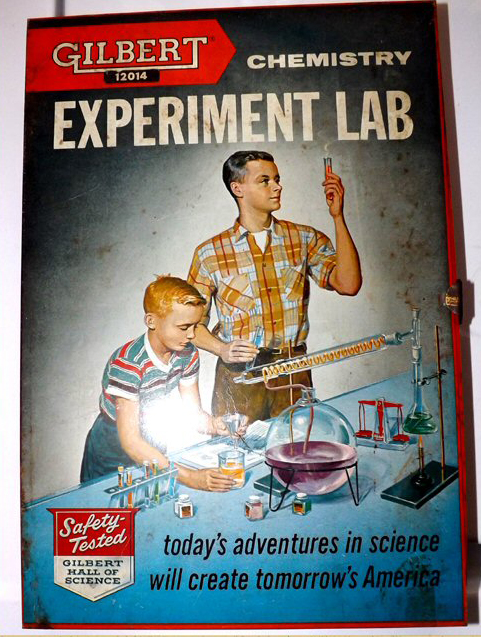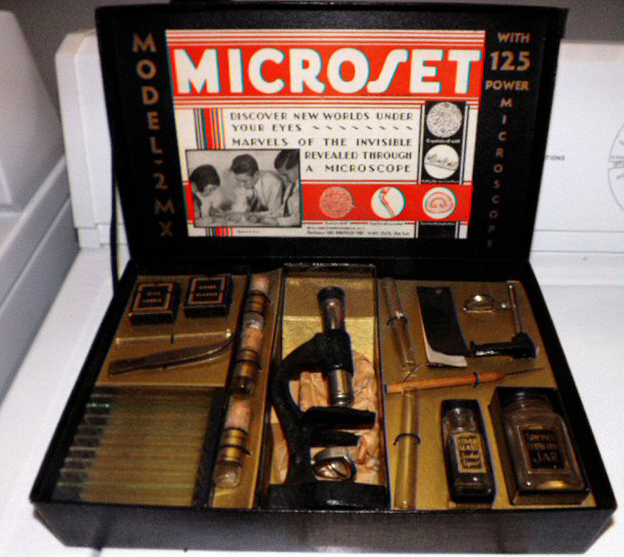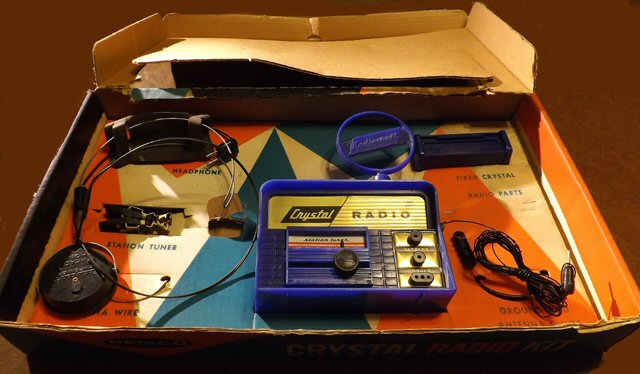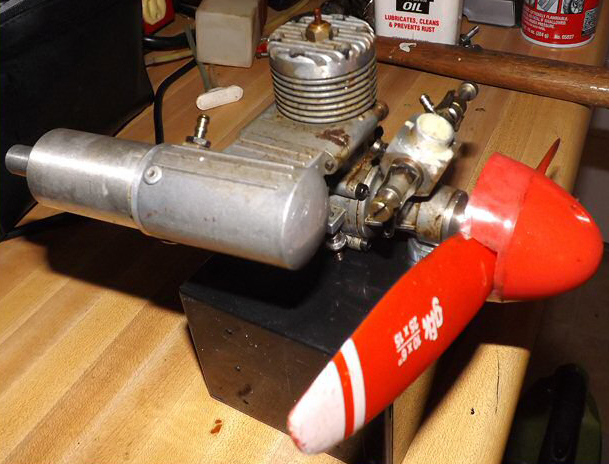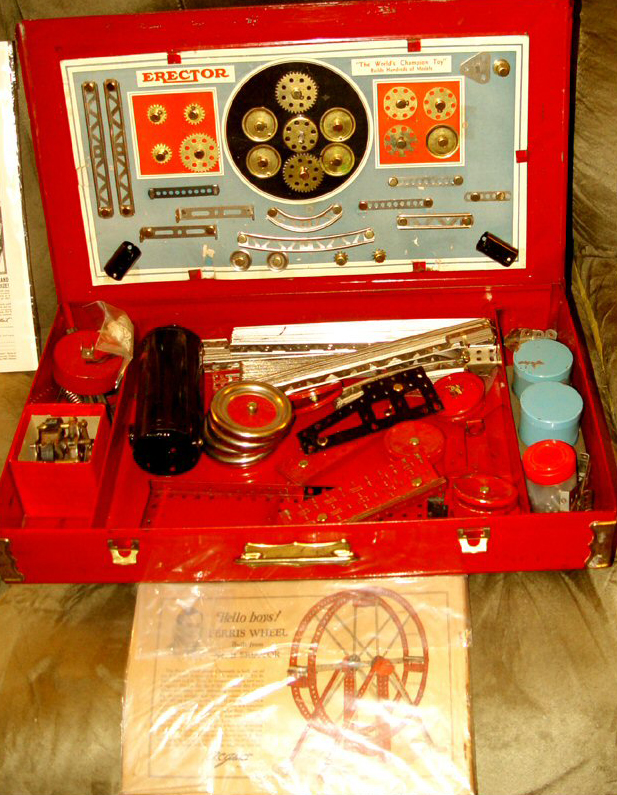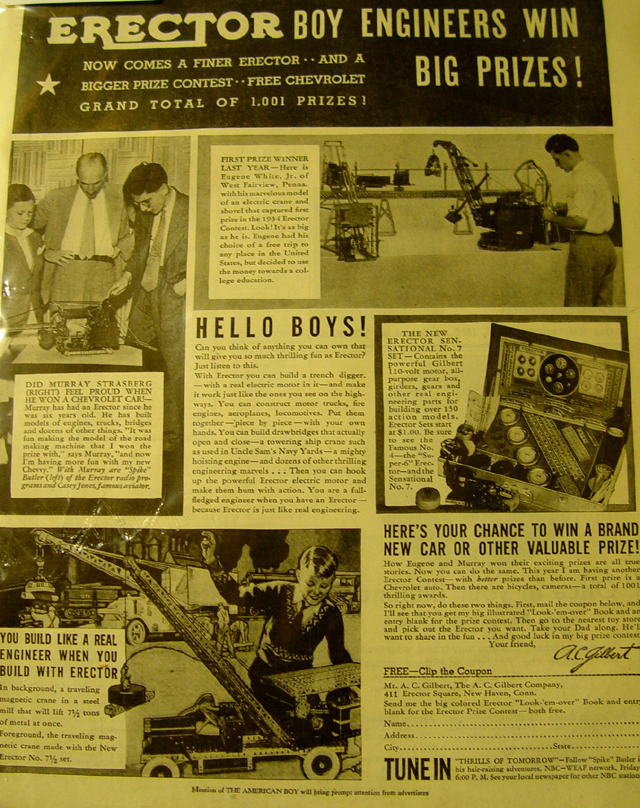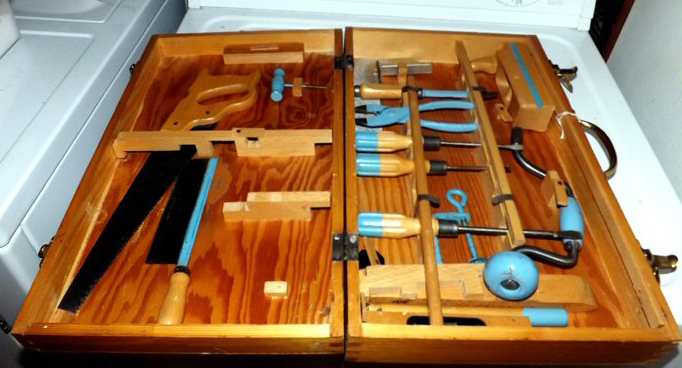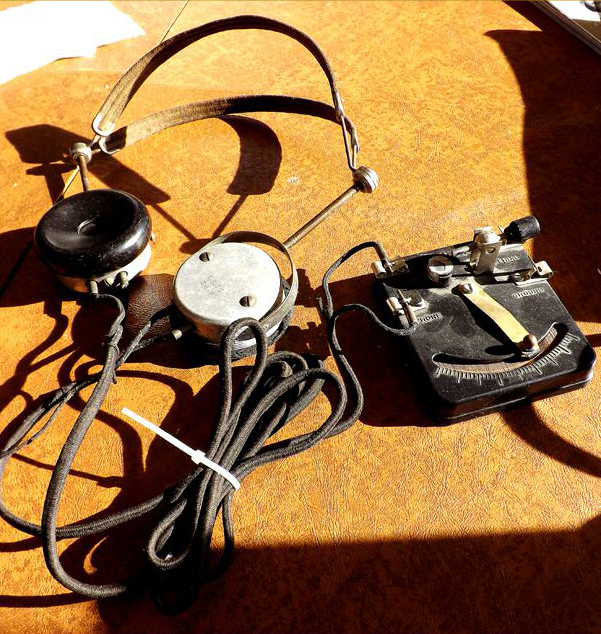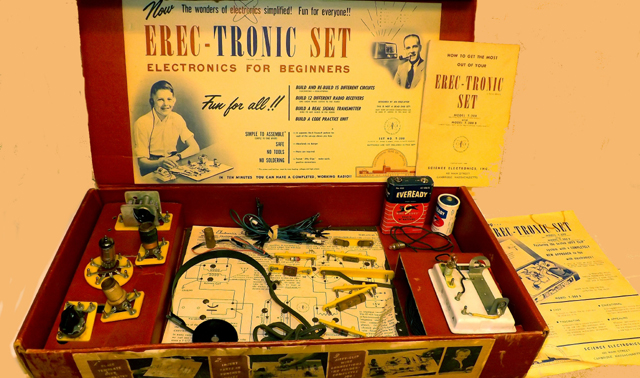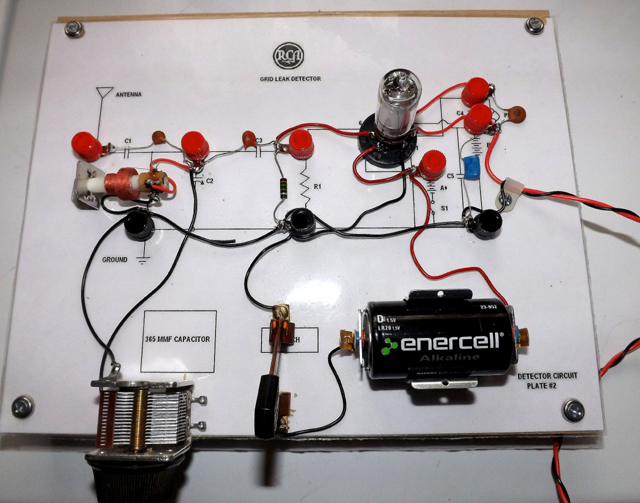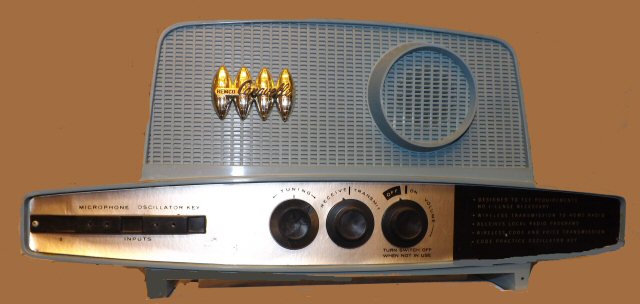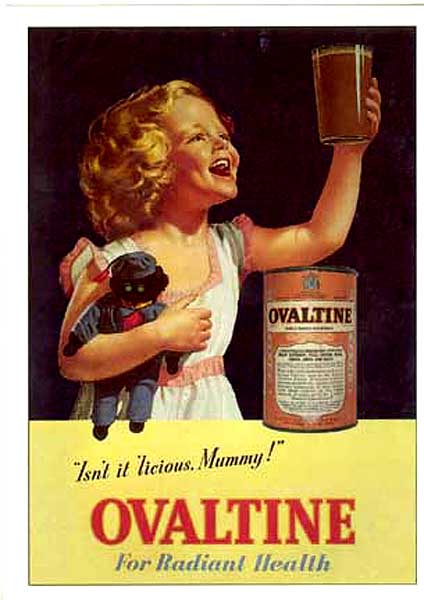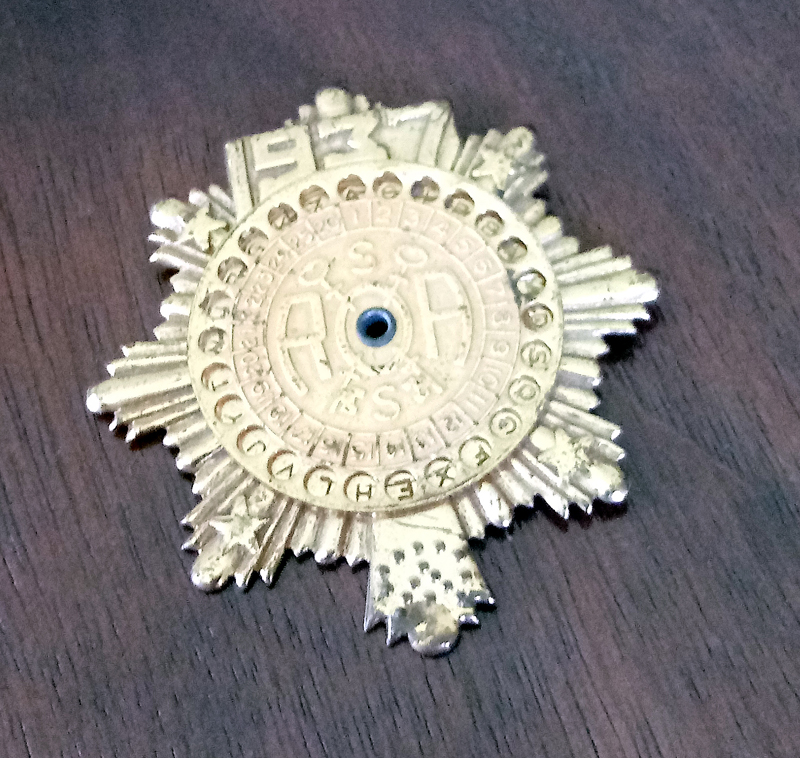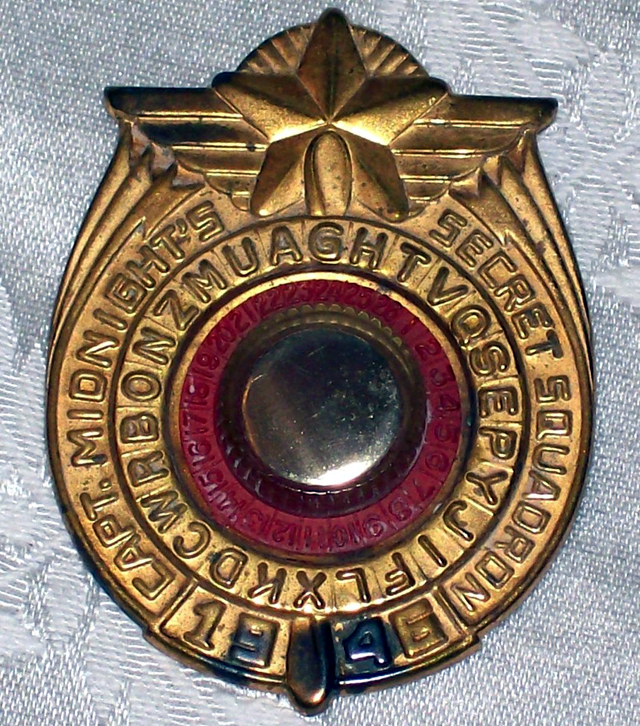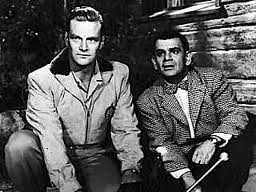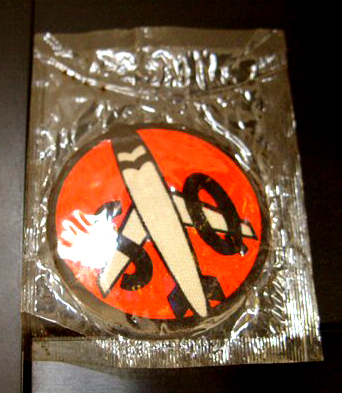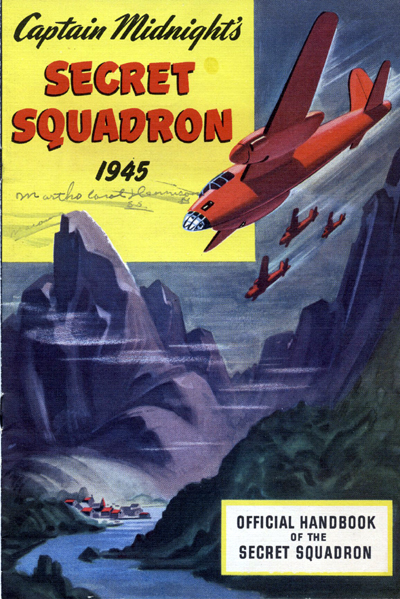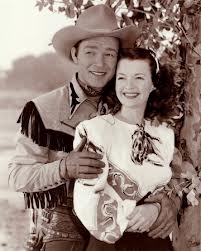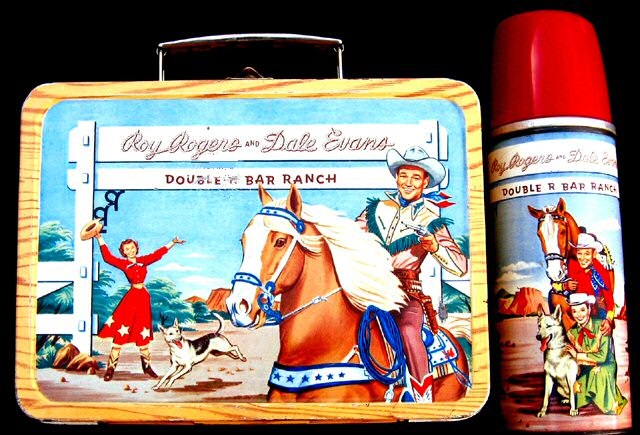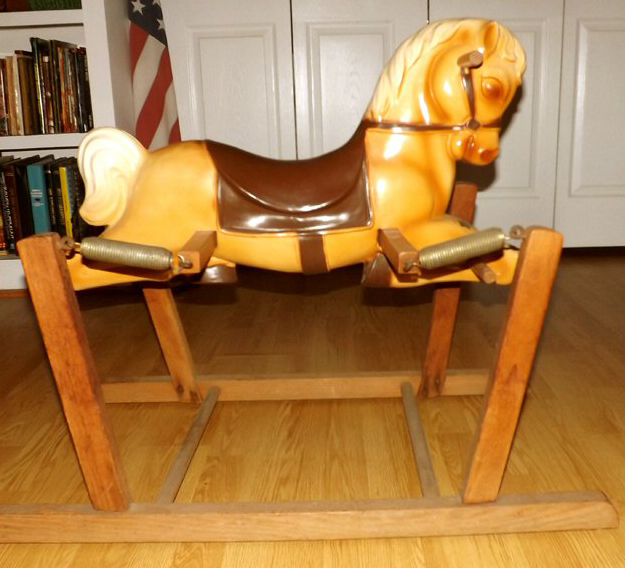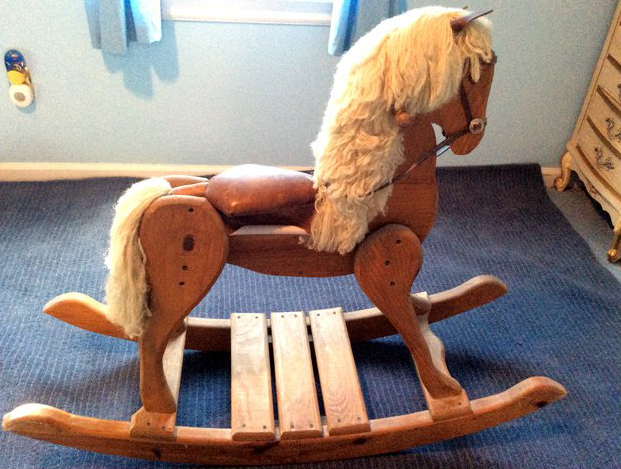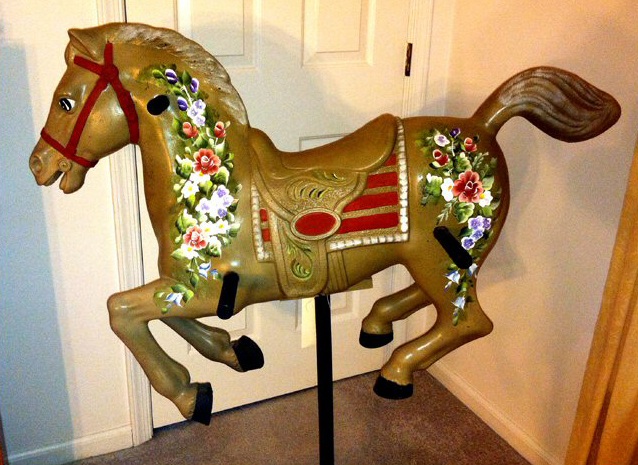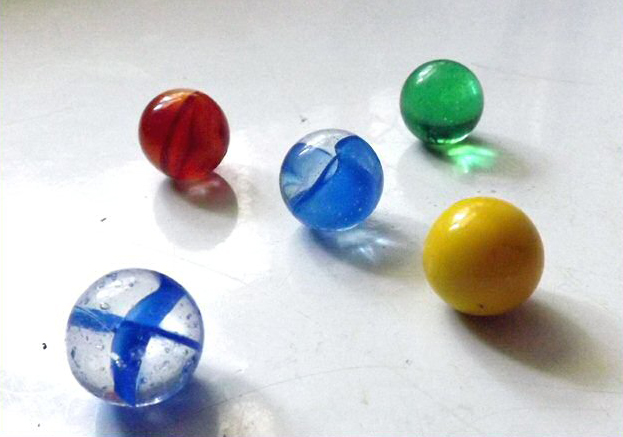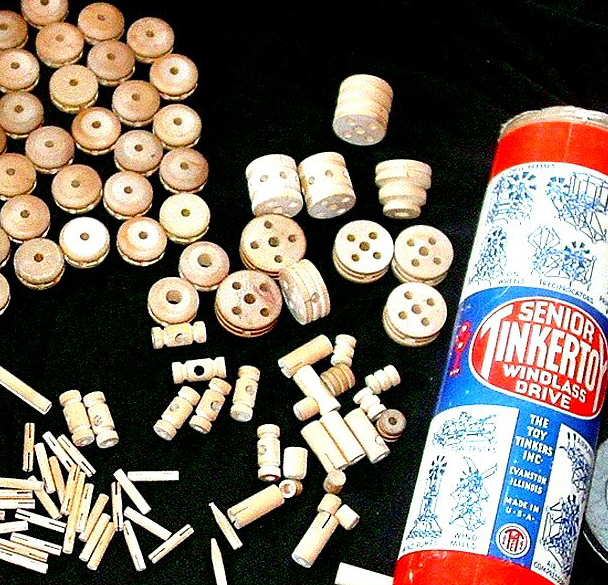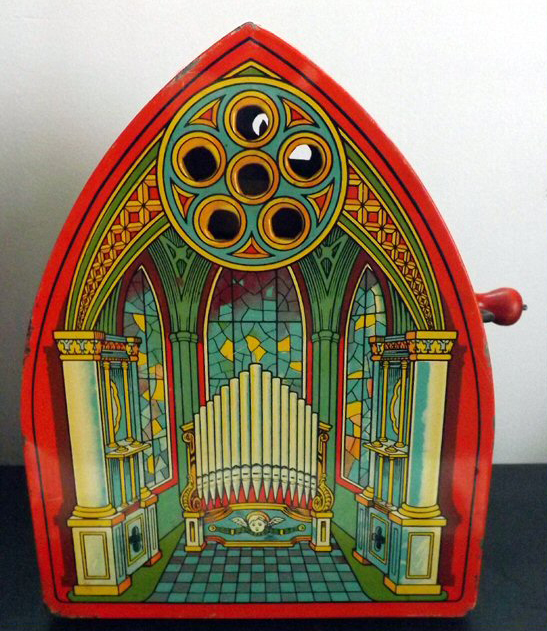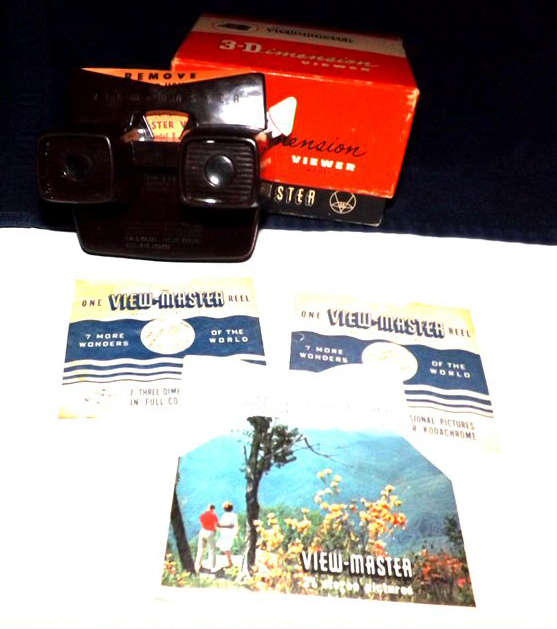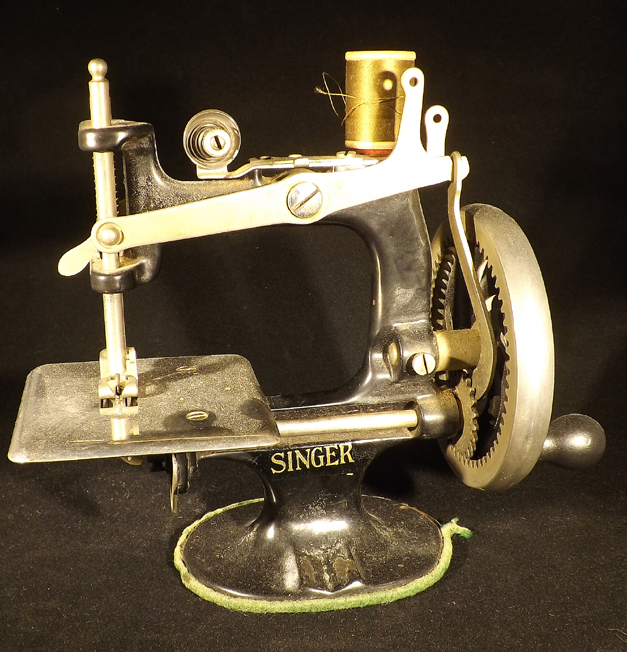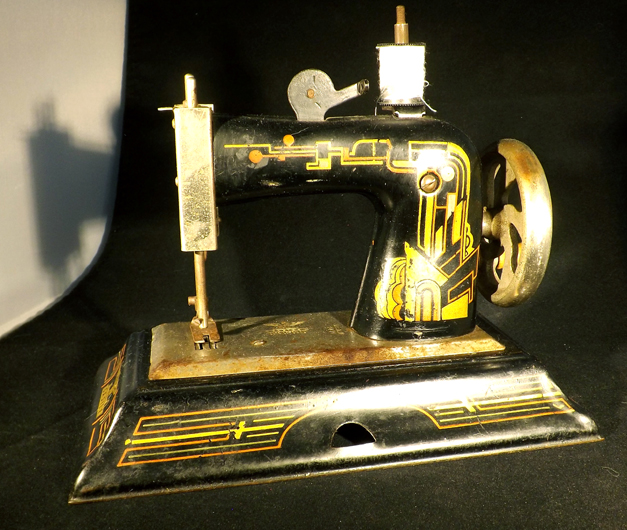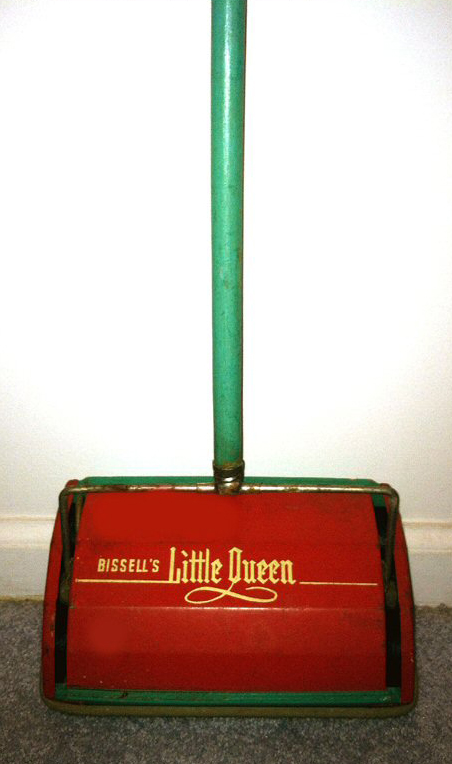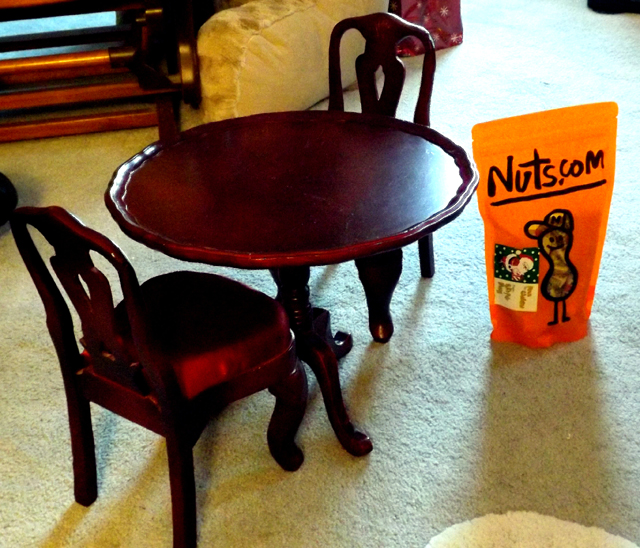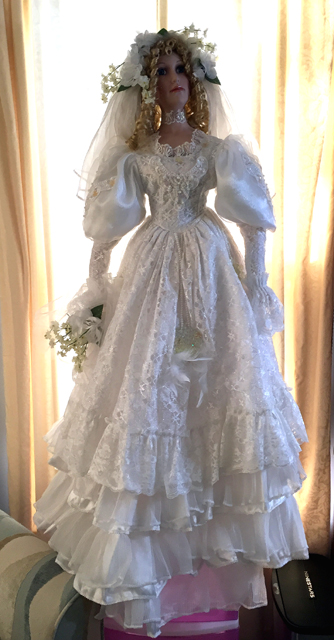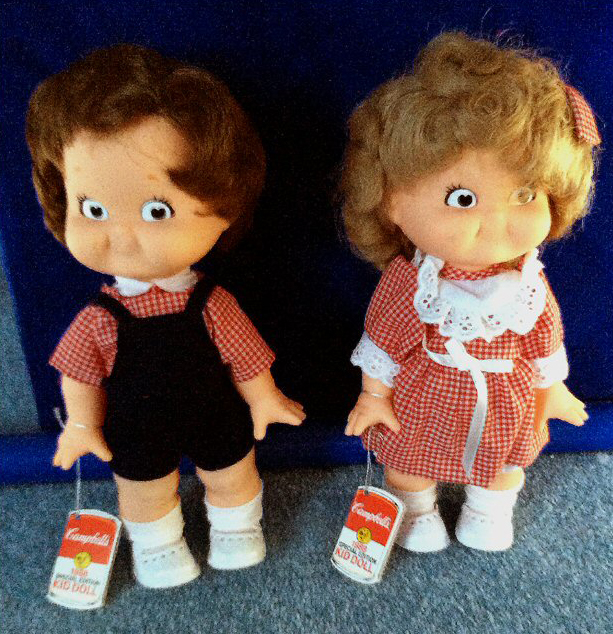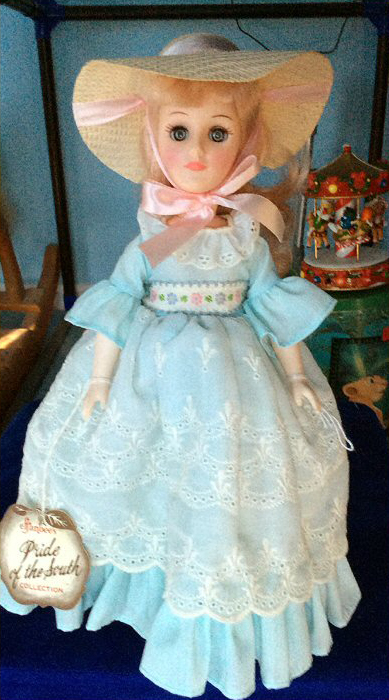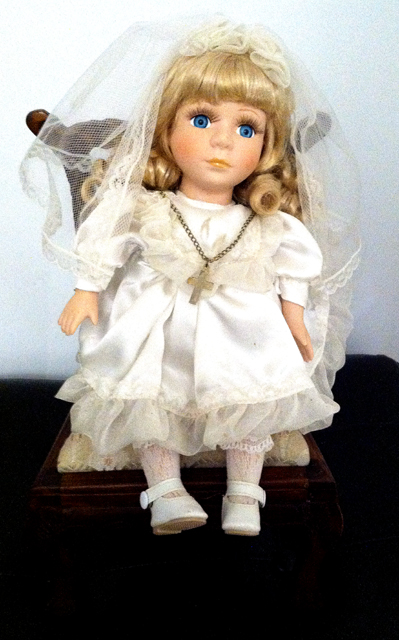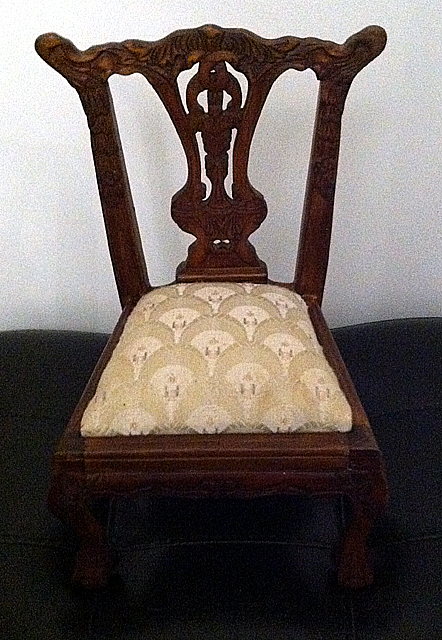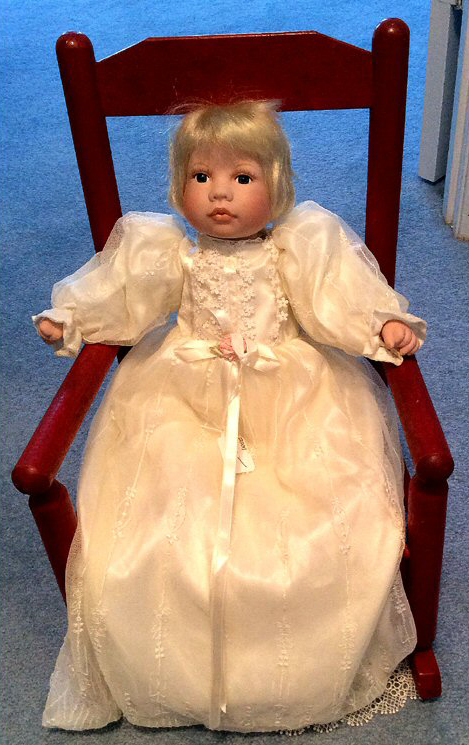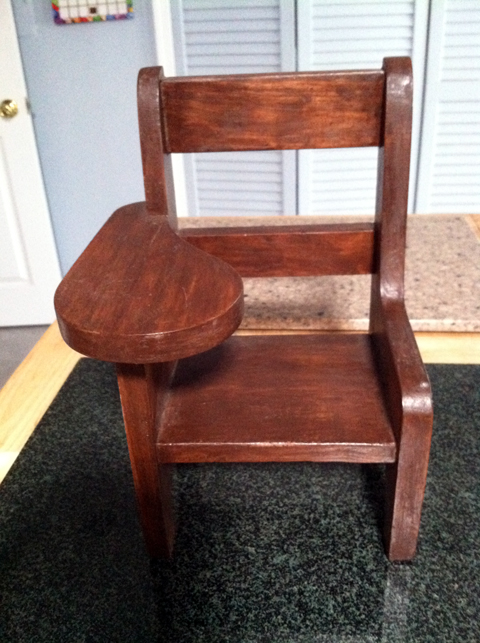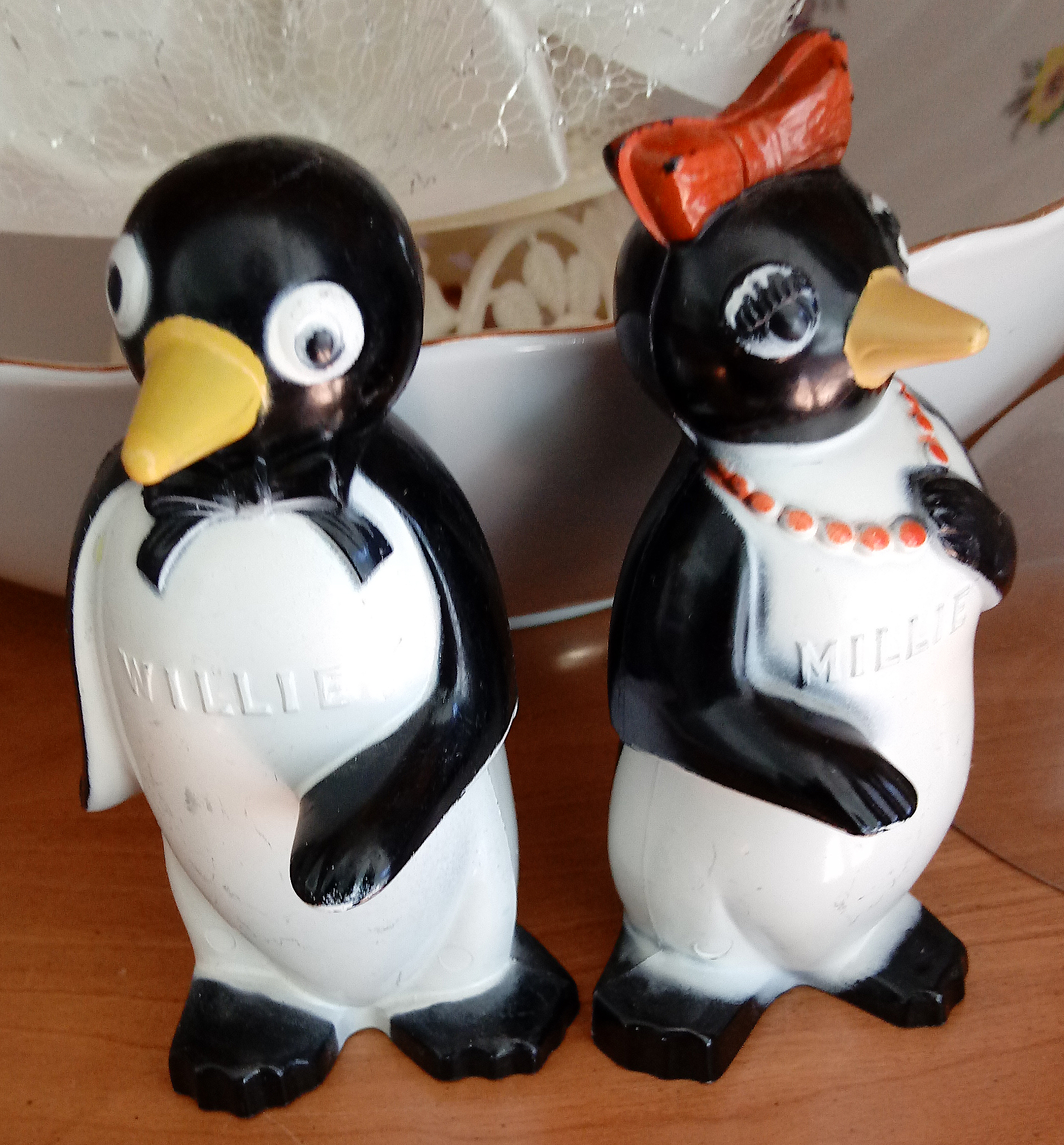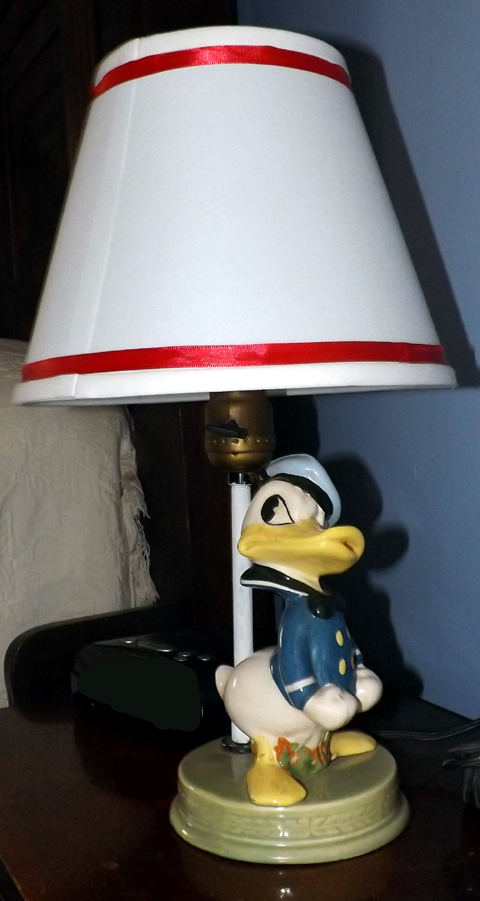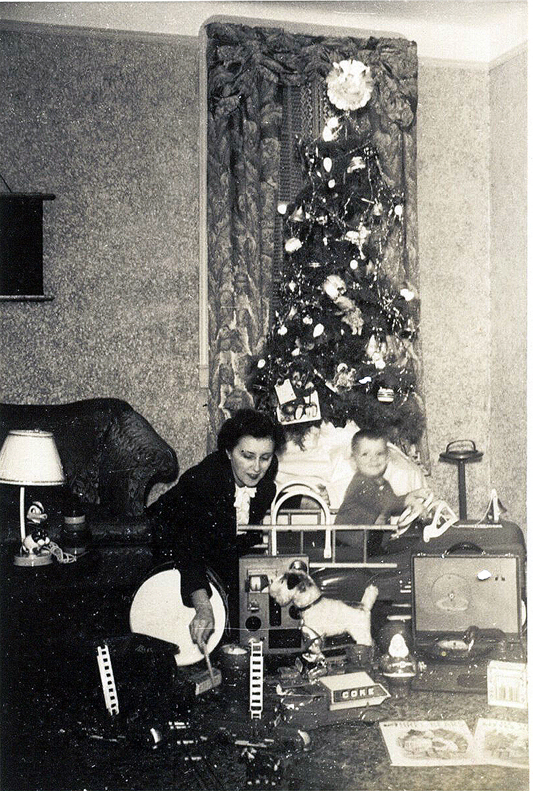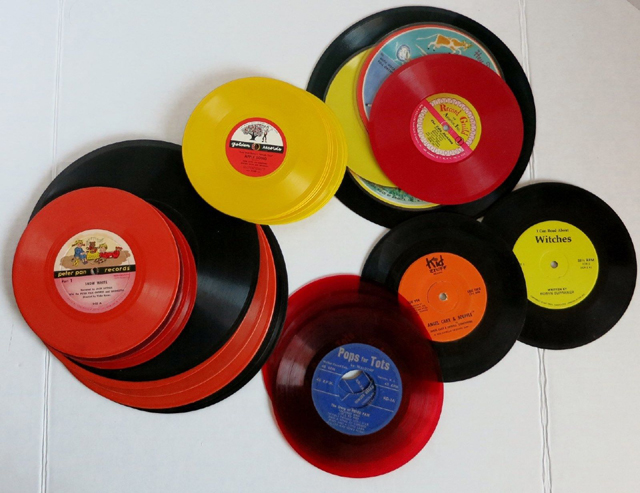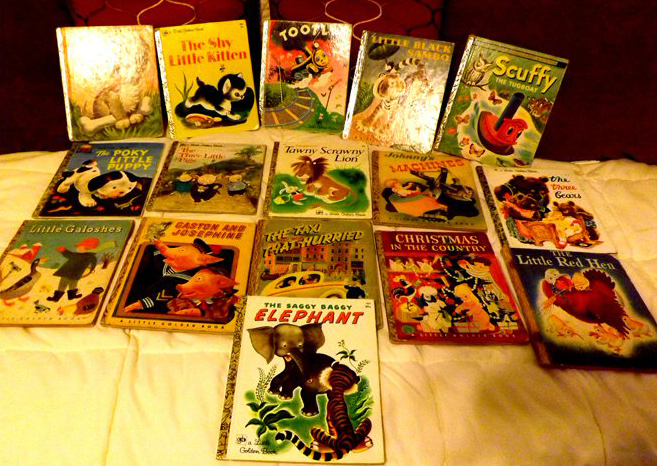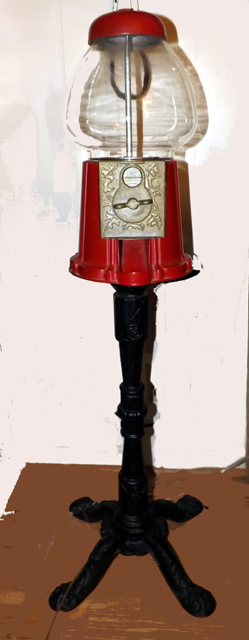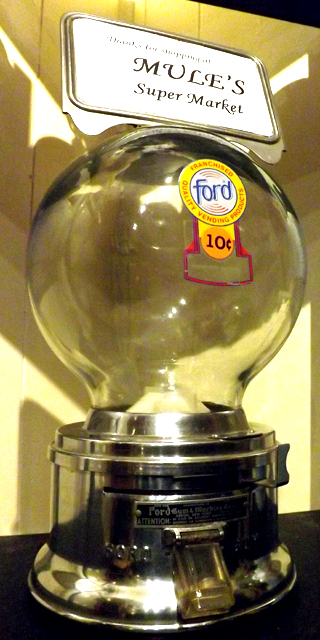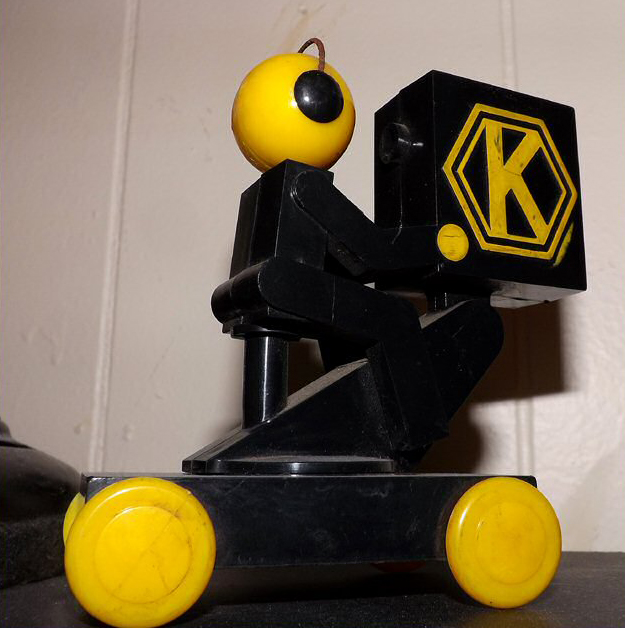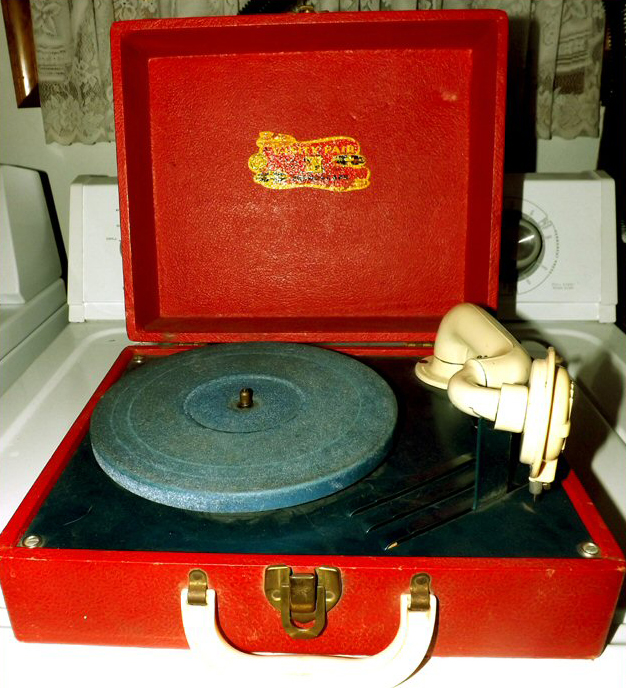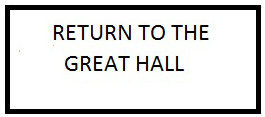You are now in the Museum Of Yesterday's
20th Century Toy collection.
|
TOYS FOR THE 20th CENTURY CHILD |
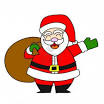 |
In the beginning of the 20th Century, the average child in America had toys that were primarily representations of things used by adults. For example, a typical toy of the early 1900s, much like the toys dating to previous centuries, were inactive or non-self propelled toys. Tin trains, for example, had come on the scene as early as the mid-1800s, but they relied on the imagination of the child to make them actually move.
By the end of the first decade of the 1900s, scientific discoveries that were changing the life of typical American families, were also being applied to toys. Little girls now had toy sewing machines that really sewed, and their brothers had steam and electric powered trains and erector sets that actually operated under their own power. Even primitive working radio sets were beginning to find their way into the hands of children by the early 1920s.
Following World War II, there was a technological explosion on the American landscape. Unlike the lean years of the Great Depression and the dark manufacturing years of World War II, the country now had not only a greater wealth and disposable income, but we had access to those technical advances that had been brought on by the War. It was the age of electronics, rockets, and realistic toys. "Betsy Wetsy," a realistic looking doll that moved, cried and even replicated bodily functions, was in high demand by little girls all over America. At the same time, boys were flying model airplanes with real operating engines and even radio controls. Science was exploding everywhere, as we looked forward to the day when science realistically could put a man in space or on the moon.
Come with Ol' Santa now as I take you on a nostalgic walk through the Museum of Yesterday's toy store. If you were a child of that era, you will probably meet some old friends along the way. |
|
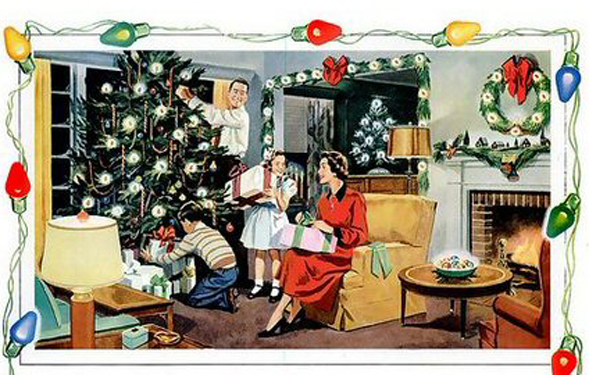
1949 Christmas lighting ad from General Electric
A Christmas scene reminiscent of millions of middle-class American homes and families in the "post-war" 1940s.
|
MINIATURE STEAM ENGINES
The museum's toy gallery houses an extensive collection of mechanical and steam operated toys from the 20th Century. While some of these working engines were originally marketed as toys, others in our collection are actual example pieces, made by apprentice machinists as part of their training. In the late 1800s, it was a common practice that apprentices had to build working models of the types of equipment on which their future work would depend. Here are some examples of the rare steam engines and accessories from the museum's collection
|
|
The engine above is a custom made engine that was hand built by a machinist. |
|
|
The Weeden Manufacturing Company's production of toy steam engines has left a memorable legacy. Founded by an ingenious watch maker, William Nye Weeden, this U.S. based company made its mark in history competing with German manufactures from the Nuremberg area such as Bing, Doll, Marklin, Plank and Schoenner as well as Mamod, Bowman and Burnac in the UK. Our museum contains a substantial collection of Weeden models. The engine pictured above dates to the early1930s. |
| |
|
Here is a Weeden Model 17 engine with a vertical "donkey" boiler configuration. |
| |
|
This engine was built by the Jensen Toy Company, still a popular American maker of toy engines. |
|
|
The engine above is actually a machinist's apprentice test. Machinists-in-training were required to build working models of machinery on which they would be working before they could reach the journeyman level. |
|
|
A Steam Tractor manufactured by the Mamod company of Summit Crescent, Smethwick, West Midlands |
| |
|
Model SE100 engine by the K. J. Miller Corporation |
| |
|
A Weeden #34 steam engine and boiler which are now undergoing restoration in the museum's mini-machine shop. It will be fully operational when restoration is completed. |
|
|
| |
|
Weeden's Model 42 boiler and engine |
|
|
The photo above is of a complete machine shop, including a working generator to provide lighting, which is powered by a steam engine (in forefront of photo). The tools are driven by overhead belting just as was the case in actual machine shops and factories in the early part of the century. |
|
TECHNOLOGICAL AND EDUCATIONAL TOYS
The mid 1950s saw an explosion of toys geared to the child with a love for science. Not only were scientific advancements happening in the world all around us, but the new invention of Television enabled the makers of high-tech toys to more effectively market their products. Each Christmas, a new generation of aspiring young biologists, chemists and engineers were now requesting scientifically oriented toys from Santa.
A monumental influence in this movement came in the way of a weekly television show geared to children who were interested in science. "Watch Mr. Wizard," a program that was the brain child of former military fighter pilot and science teacher Don Herbert, gave young viewers a look at actual science experiments, performed in Mr. Wizard's television laboratory. Herbert's patient explanations, directed at young guests who participated in the show's demonstrations, enabled youngsters across the nation to learn basic principles of science. Herbert continued his educational programs for many years, and he remained a prominent figure in science education until his death in 2007. As one commentator stated upon hearing of Herbert's death, "He was responsible for giving the United States our first home grown generation of rocket scientists just in time to respond to Sputnik."
|
|
Don Herbert as Mr. Wizard, in a scene from one of his weekly television programs. |
| |
Here is a look at some of the science toys that children of the 1950s were receiving |
|
An example of the extremely popular A.C. Gilbert line of chemistry sets |
| |
|
The Microcraft microscope and dissection set for the future biologist. |
| |
|
REMCO Crystal radio kit |
|
Inspired by many dads who had been involved in flying or maintenance of airplanes in World War II, children of the 50s were flocking to purchase model aircraft that could really be flown. Radio control, based on technology that guided bombs during the war, was now being applied to remotely control the engines and flight controls of realistic model planes. Shown above is the internal combustion engine used in a typical model plane of that era. |
| |
|
From the early years of the 20th Century, The A.C. Gilbert Toy Company was a respected name in educational action toys. The Gilbert "Erector Sets," which enabled aspiring young engineers to test the principles of physics and mechanics, remain popular even today. The magazine ad, shown below, advertised contests in which youngsters could compete for prizes based on original designs built with Erector Sets. |
|
| |
|
| This set of actual working tools enabled young aspiring carpenters and wood workers to work right along with dad in the construction of real furniture and other wooden projects. |
| |
|
While the "crystal set" radio had long been replaced by more modern radios in the home, many youngsters still appreciated the thrill of building their own working radios. The Philmore Company, along with a number of other manufacturers of radio and electronics products, provided primitive radios, in kit form, to capture the imagination of aspiring young radio engineers. |
| |
|
Cashing in on the concept of the A.C. Gilbert Erector Set, the company Science Electronics, of Boston, made a radio experimenter's kit called the "Erec-Tronic" that enabled young "engineers" to construct fourteen different radio circuits, including a wireless broadcaster to send signals through an AM radio. The set contained all parts, and a series of paper templates that were placed on a peg board, thereby giving specific parts placement and wiring instructions for each experimental circuit. |
|
|
RCA-Victor, a major manufacturer of radios and televisions in the mid-20th Century, jumped into the juvenile market in the mid-50s with this "Junior Technician Prep Kit." The highly educational toys were marketed directly to customers of the RCA home appliance service division by the repair men who still made "house calls" to service radio and television sets in the home. When an inquisitive child showed an interest in the workings of the family TV set, the technician would offer to sell the parent one of these one-tube working radio kits as a way for the child to advance his or her interest in the field electronics. The kits came with easy to understand instructions, and easily assembled parts which the young "technician" would then assemble on a pre-drilled board. The cardboard box, in which the toy was packed, served as the radio's case. The sets were able to receive AM radio broadcasts with exceptional clarity, and the young builder received a sense of accomplishment in knowing that they had built a working radio. |
| |
|
The REMCO Caravelle was an extremely popular toy for the 1950s child. It enabled young aspiring radio announcers to set up a low power AM radio station that could broadcast throughout a typical neighborhood. This toy inspired many children to seek careers in commercial broadcasting, including nationally known talk show host Rush Limbaugh. |
| |
MODEL TRAINS COME OF AGE
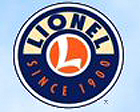 |
No discussion of 20th Century American toys would be complete without touching on the popularity of model railroads. As the railroads of our nation continued to grow and serve a critical role in the day-to-day operation and commerce of the nation, children also became interested in trains. In the early part of the century, the Lionel Company began to manufacture realistic model trains that were able to run with the aid of electric motors. Following World War II, companies like Lionel, American Flyer and Marx employed new materials and manufacturing techniques from the war to produce an exciting line of model trains and realistically animated accessories.
A complete section devoted to model railroading can be found in our Railroad Gallery. To see the museum's collection of real and model railroad artifacts, please visit our Railroad Gallery which is accessible from the museum's home page. |
|
|
THE INFLUENCE OF RADIO AND TELEVISION ON THE
CHILD OF THE MID-20th CENTURY
Even before World War II, children had been influenced by radio. The networks soon learned that American public's intreague with "soap operas" by adults, could also apply to children in the form of serial hero adventure shows. As early as the mid 1930s, juvenile adventure shows such as "The Air Adventures Of Jimmy Allen," "Terry And The Pirates," "The Green Hornet" and "I Love A Mystery," drew children to their radio, and subsequently to the sponsors' products.
In the infancy of shows aimed at young listeners, Ovaltine, a maker of a malted milk additive for milk, led the charge with sponsorship of two shows, "The Adventures Of Captain Midnight" and a show based on the popular newspaper cartoon "Little Orphan Annie."
|
|
Advertising executives soon came up with a unique method to estimate the listenership of Ovaltine's sponsored programs. Young listeners would be offered a "secret decoder" which could be obtained by sending labels from Ovaltine to a specified address. The child would then receive their decoder by return mail. At the end of each episode, Orphan Annie or Captain Midnight would give out a secret message in the form of a scrambled letters or numbers. The decoders would perform simple decoding of the daily advise, which usually said something like "be sure to drink your Ovaltine. Shown below are the decoders from both the Orphan Annie show and Captain Midnight's secret Squadron, along with some other advertising "give-aways" from those shows.. |
|
|
Shown above are the Orphan Annie decoder (top) and the Secret Squadron decoder. |
|
Richard Webb and Sid Melton, the stars of the "Captain Midnight: series on television.
(Below: The Secret Squadron arm patch and manual that was available to children from the makers of Ovaltine.) |
|
With the increase in patriotic awareness brought on by the war, sponsors such as Ovaltine were able to capitalize by forming what could be considered "cults" of youngsters who religiously listened to programs such as Captain Midnight, and who wanted to be part of the action as members of special "clubs" like the captain's Secret Squadron. Awards for box tops type programs remained popular well into the 1960s. |
| |
|
Roy Rogers and wife Dale Evans were popular stars of children's westerns in the 1950s. In their private lives, Roy and Dale were staunchly religious people who set an example for their young admirers. In their later years, they devoted much of their private wealth toward providing wholesome homes for orphaned and problem children. |
|
The Roy Rogers lunch box and thermos were extremely popular with Roy's millions of young fans in the 1950s. Like most boys of that era, our museum founder carried his lunch to school in a Roy Rogers lunch box which was a gift to him, on his first day of school, from Mrs. Esther Schroeder, his next door neighbor at the time . |
| |
|
This child's rocking horse was one of the products licensed from the Roy Rogers television and motion picture producers. It was a likeness of Rogers' horse "Trigger" which he rode for 25 years in his motion picture and television series. This toy was a donation to the Museum Of Yesterday by Ms. Ellyn Orth-Meier of New Orleans. |
|
"My Little Pony" was another example of a popular action horse toy from the mid Century. |
| |
|
And this decorated steed once thrilled youngsters as they rode the historic amusement park carousel. |
| |
|
Even TV shows directed to adult audiences, often had products that caught the attention of children. The Kraft Cheese Company sponsored a number of early television programs that featured variety and serious drama formats. At the end of the show, a whimsical animated camera man would roll around and pan during the credits. This little camera man became so popular with audiences that the Kraft company began offering toys, made in the likeness, as premiums to viewers. You can see an example of this little guy in action by clicking on his picture above. |
| |
|
And of course what 1950s "baby boomer"could ever forget Froggy The Gremlin and the Buster Brown Show on Saturday morning TV in the very early 1950s. A creation of vaudevillian "Smilin Ed" McConnell, and sponsored by Buster Brown children's shoes, the show was turned over to veteran movie and TV actor Andy Devine upon McConnell's death. The show featured educational stories about foreign lands, along with trained animals Midnight The Cat and Squeaky the Mouse. The highlight of the show, however, was Froggy the Gremlin who appeared and dealt havoc to the "guests" that he regularly tormented. This 1948 Froggy puppet was marketed under license from McConnell. To see Froggy in one of his famous segments from the Buster Brown Gang, click the picture above. The Froggy character, shown above, now resides in The Museum Of Yesterday's antique toy collection. |
| |
SIMPLER TOYS
All interesting and popular toys of the mid-20th Century child were not necessarily high-tech. Many simple toys enjoyed the same popularity as the more expensive and complex technical toys of the era. Here are a few examples of extremely popular non-technical toys of the era.
|
| |
|
Marbles were primitive but popular toys during the mid-20th Century. |
| |
|
The inventor of the popular "Tinker Toys" was inspired when he came across a group of children playing with wooden sticks and old sewing thread spools. Based on that inspiration, he set about to create a toy that expanded on that principle. After some tweaking, the toy began to sell, and the rest is history. |
| |
|
This popular line of mechanical music boxes, made of lithographed tin, were the product of the J. Chein Company of Burlington, New Jersey. These toys were popular from the 1930s well into the 1950s, and most are highly sought after by collectors and "baby-boomers." This example of a music box that, when cranked, produces a realistic sound of a church organ, is highly collectable. In the year 1948, our museum chairman received one of these as a Christmas present from Santa. |
| |
|
The VIEW-MASTER was another popular toy of the 20th Century. A stereo optical viewer, based off of the concept of the STEREO-OPTICON of the 1800s (example below), provided a simple way for children to view slides of famous places, educational subjects, and cartoon characters. The company marketed a large offering of slide wheels as accessories to the viewer. |
|
| |
| |
TOYS FOR LITTLE GIRLS
While some of the most exciting toys of the 20th Century were aimed at boys, the nation's toy makers took full advantage of the market that existed for toys that were of interest to girls. Here are some examples of what the young ladies of mid-Century could expect from Santa.
|
|
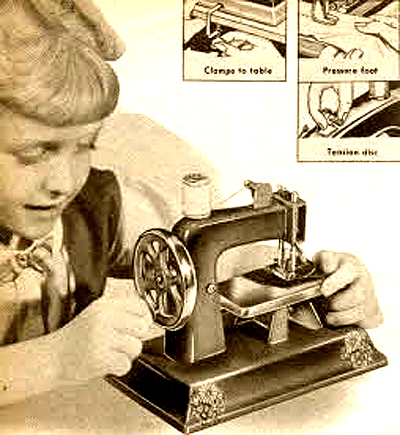 |
Sewing machine manufacturers, such as the Singer Company, were some of the first to recognize that by making working, child-sized versions of their products, little girls often formed life-long relationships with the company that made their mother's sewing machines and household appliances. Similarly, the fully functioning Bissell carpet sweeper, shown below, was an exact replica of Mom's full-size sweeper. |
|
|
History has demonstrated that the Women's Equality movement in America seriously gained momentum during World War II. In the absence of the men who were overseas on the battle front, many women joined the working ranks in factories, service industries and even in the military services. While it can be said that a substantial number of women retained jobs outside of the home after the war was over, many wives, especially those of of returning service men, elected to return to the home and raise families. In the post-war years, most women who were raising families, did not hold outside employment and remained full-time homemakers.
Influenced by their stay-at-home moms, the toys requested by young girls of the late 1940s and early 50s, directly reflected on home making and the mothering of children. A girl who wanted a chemistry set or science tool in that era would have been considered an exception to the rule, and most of the toys manufactured and marketed to young girls were along the line of dolls, toy household appliances, and such.
|
| |
|
One example was the Bissell Little Queen carpet sweeper. A fully functional toy patterned after the Bissell Queen adult version, found its way into the hands of many little "housekeepers" across America. |
| |
|
While this unusual and highly detailed miniature Duncan Phyfe table and matching chairs could have been considered a toy, it was actually the product of a skilled custom furniture maker who intended it as an easily portable demonstration of his fine workmanship. It is constructed of the same high quality wood and upholstery material that would have been used on full-size furniture made by this craftsman. |
| |
|
This beautifully clad, full-size doll, wears a scaled wedding dress that was custom crafted by a professional wedding dress designer. The doll stands over four feet tall and is proportional to an actual child of about five years of age. |
| |
|
The iconic Campbell's Kids dolls were offered by Campbell Soup Company in the 1950s. The Campbell Kids appeared in much of the company's advertising from that era, and replica toys were sold in many forms. |
| |
|
In the early decades of the 20th Century, doll making followed the guidelines established by European toy makers in the previous century. China, alabaster and porcelain doll faces were the norm. Later, after the development of plastics, manufacturers switched to the newer materials because of their softness and more pliable and human-skin like appearance. The dolls shown here are from the early years and illustrate the use of porcelain in the face and body construction. |
| |
|
This early 1900s porcelain face doll, dressed in a representative regulation Roman Catholic girl's Communion dress and Scapula, is all ready for her "First Communion" celebration in the church. The chair, on which she is seated, is shown in more detail below. This highly ornate and detailed miniature chair was originally a salesman's sample which could be carried around as an example of a custom furniture maker's work. |
|
| |
|
Above, another of the turn-of-the-century porcelain face dolls in the collection. This one is seated in a custom chair maker's sample rocking chair. |
| |
|
Another of the early 20th Century porcelain dolls in the collection of a member of the DeMajo family This doll, is dressed in well preserved custom made antique clothing representing what a child would have worn on her first day at school. She is shown seated in a miniature school desk which is also part of this collection. The desk, in detail, is shown below. Like the chairs shown above, the desk was part of a collection of miniature furniture intended to be "salesmen's samples" for a producer of custom furniture in the early part of the 20th Century. |
|
| |
NON-GENDER SPECIFIC TOYS |
|
Even tobacco companies had a hand in marketing childrens' toys. As an example, Willie and Millie, the Kool Cigarette penguin toys, made children aware at an early age, that coupons on Kool Cigarette packs could earn smokers free rewards. |
| |
|
Walt Disney licensed products have been around for at least three-quarters of a century. In the post WW-II years, this Donald Duck nursery lamp was among several varieties of popular Disney nursery fixtures for the "Baby Boomer" generation. Below, evidence that our museum director received this model of Donald lamp from Santa on Christmas of 1948. The lamp is visible at the extreme left of the photo. |
|
| |
While most toys of the day were aimed at children of specific genders, there were popular toys that did appeal to both boys and girls. Here are a few examples. |
|
The child's phonograph above, was among the last totally acoustic phonographs produced in the United States. It dates to the early 1950s, and uses no electronics to reproduce sound. In the era following World War II, many publishers began to release 78 RPM records that specifically targeted the greatly expanding generation of "baby boomer" children. If you click on the photo above, you will hear a typical recording, sold during the late 1940s "post-war" era, that was intended for use with these children's phonographs. Shown below is a portion of the "Little Golden" and "Peter Pan" children's' record collection from the Museum Of Yesterday's extensive audio library. |
|
| |
 |
Story books and phonograph records, created for children, were also popular during the mid-20th Century. Little Golden Books, published by Simon and Schuster Publishing Company, offered an extensive series of popular children's stories, along with illustrations. The original Golden Books, dating to the 1940s. are much sought after by collectors. One book, titled "Little Black Sambo" was the story of a child in the jungles of Africa. Although Sambo was able to outsmart a tiger, and was in effect a hero in the story, civil rights organizations later demanded that the book be removed from the Simon and Schuster publication list. Contrary to the intent of these political correctness organizations, the books skyrocketed in value, and an original copy of "Little Black Sambo" now sells for upwards of $1000 whenever they become available on auction web sites. Shown below is a portion of the museum's collection of original 1940s vintage "Little Golden Books" which originally belonged to the DeMajo family children. |
|
| |
|
| |
|
While not specifically intended as a toys, most children of the early to mid-20th Century readily recognized the "penny gum ball machines" that stood at the doors to most businesses in America. Today, the gum dispenser tradition continues in many locations, however, inflation has taken it's toll, and prices for gum and toys, available from modern day dispensing machines, now range from 25 Cents to as much as two dollars.
The Ford Candy Company was the first to offer gum dispensers, in public places, from which the proceeds were used to support the company's charities. The maternal grandmother of our founder and chairman John DeMajo, regularly shopped at Mule's Super Market on Laharpe Street in New Orleans for over 40 years until her death. At our chairman's request, the vintage Ford gum dispenser, here at the museum, bears a memorial to that establishment and it's proprietors the late Mr. Philip Mule' and his wife Ellen.
|
|
| |
Thank you for visiting our collection of vintage toys from the early and mid 20th Century. Please continue your tour through the museum's other galleries. By pressing the button below, you will be returned to the Great Hall where you will be able to select our other galleries and exhibits. |
|
Copyright 2023 The Museum Of Yesterday, Chesterfield, VA USA |


